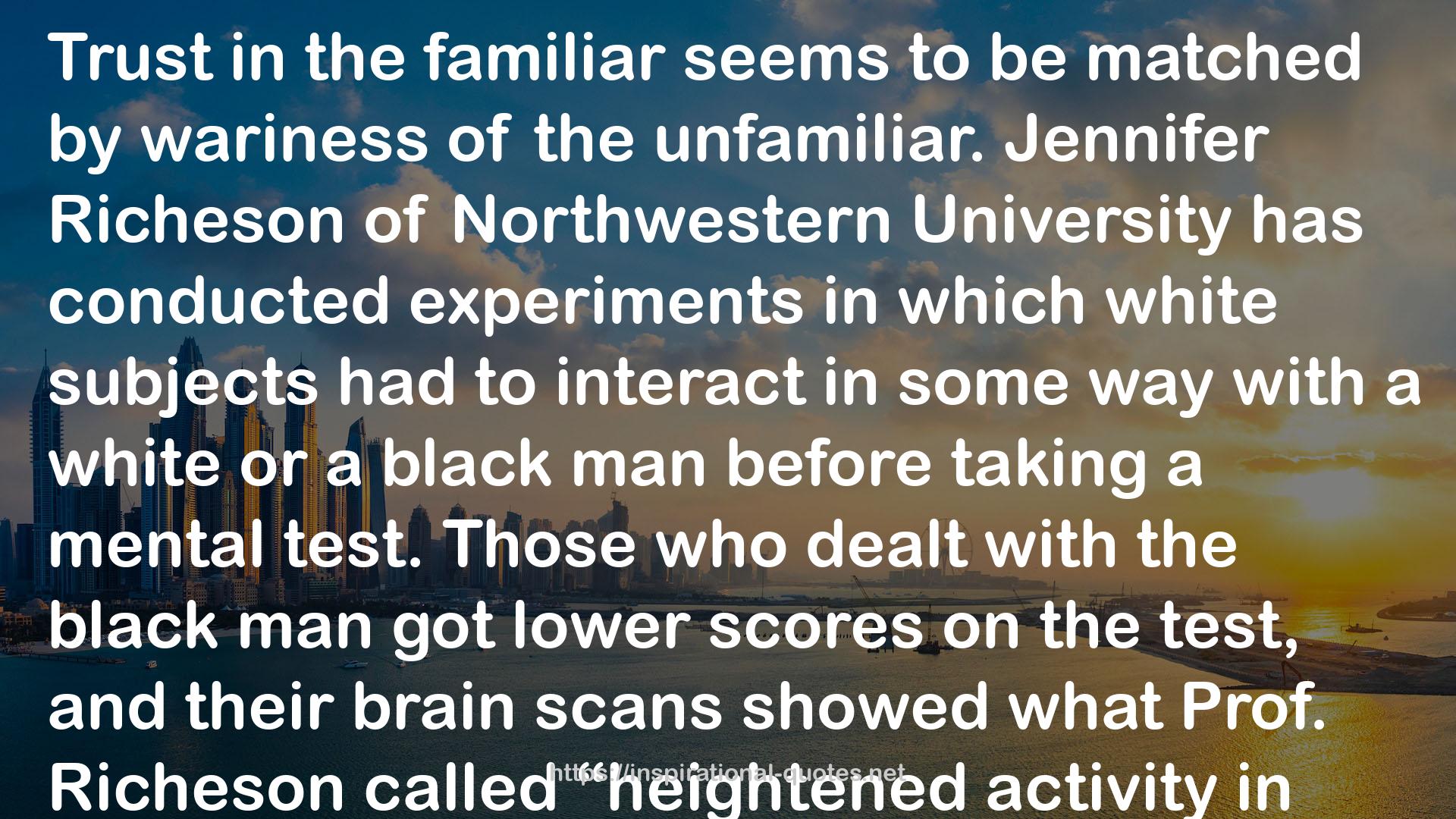" Trust in the familiar seems to be matched by wariness of the unfamiliar. Jennifer Richeson of Northwestern University has conducted experiments in which white subjects had to interact in some way with a white or a black man before taking a mental test. Those who dealt with the black man got lower scores on the test, and their brain scans showed what Prof. Richeson called “heightened activity in areas of the brain associated with regulating our thoughts and emotions.” She interpreted this to mean that white subjects were struggling with the “awkwardness” or “exhaustion” of dealing with a black man, and that this interfered with their ability to take the mental test.
Researchers at Harvard and New York University had white and black subjects look repeatedly at a series of photographs of black and white faces, all with neutral expressions. Every time the subjects looked at one particular black face and one particular white face they got a mild electric shock. Lie detector-type devices showed that subjects would sweat—a typical stress reaction—when they saw the two faces they associated with the shocks. The researchers showed the photo series several times again, but without the shocks. White subjects quickly stopped sweating when they saw the white face formerly associated with the shock, but continued to sweat when they saw the black face. Black subjects had the opposite reaction, continuing to sweat when they saw the white but not the black face. Mahzarin Banaji, the study’s leader, concluded that this was a sign of natural human wariness of unfamiliar groups. "
― Jared Taylor , White Identity: Racial Consciousness in the 21st Century
